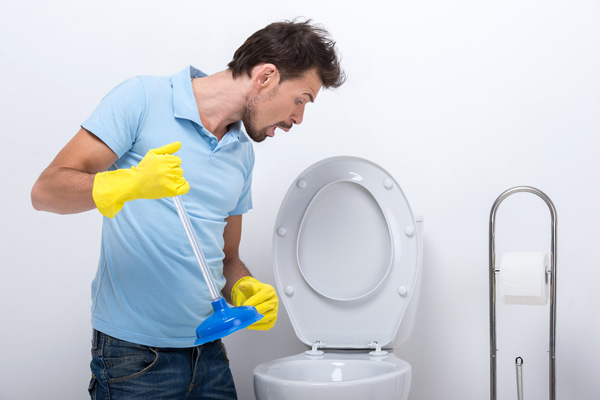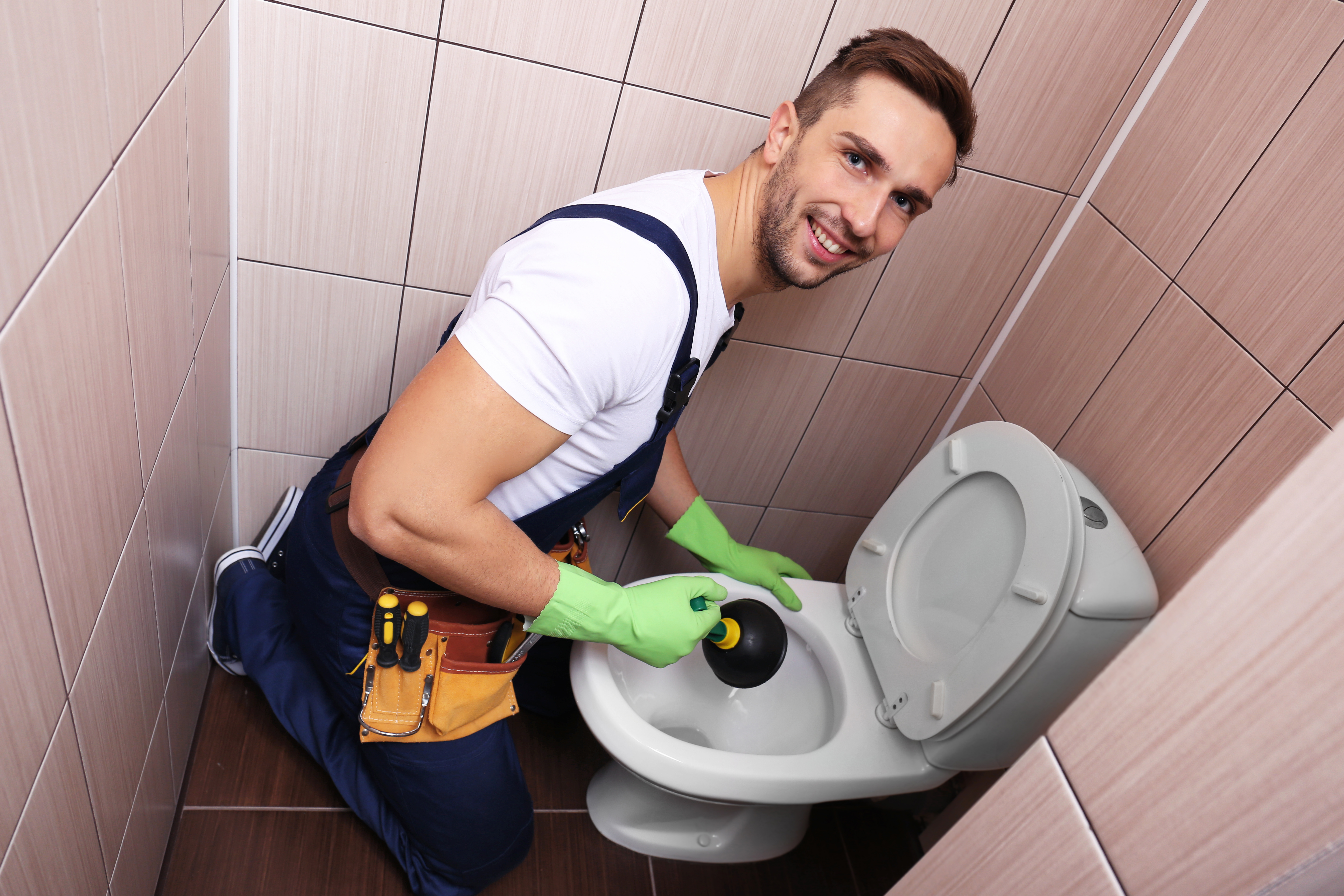Efficient Plungers and Drain Cleaner Methods: Best Approaches
Efficient Plungers and Drain Cleaner Methods: Best Approaches
Blog Article
The article on the next paragraphs about How to Use a Plunger to Unclog a Toilet or Drain is immensely compelling. Give it a try and make your own final thoughts.

Introduction
Proper maintenance of household drains is essential for preventing clogs and ensuring smooth water circulation. Among the secret tools in every homeowner's toolkit is the bettor, along with different drain cleansers created to deal with stubborn obstructions efficiently. This article discovers exactly how to use bettors and drain cleansers effectively to maintain your drains moving openly.
Section 1: Comprehending Bettors
Kinds of Plungers
There are several types of plungers offered, each created for various sorts of drains pipes and blocks. One of the most typical types include mug bettors, flange bettors, and accordion bettors.
How Plungers Work
Plungers service the concept of developing stress and suction to displace clogs. When correctly applied over a drain, they create a vacuum that can pull out debris or separate clogs.
Picking the Right Bettor
Picking the ideal plunger depends on the type of drainpipe and the nature of the clog. Cup bettors are perfect for sinks and tubs, while flange plungers are better suited for toilets as a result of their layout.
Typical Errors with Plungers
Staying clear of these errors makes sure efficient plunging: improper seal around the drain, not enough pressure, and not clearing surrounding particles.
Section 2: Using Plungers Properly
Prep work
Before diving, guarantee the plunger covers the drainpipe completely and creates a tight seal. Clear any noticeable particles around the drainpipe opening.
Technique
Begin with gentle plunging motions to construct suction. Increase stress progressively, utilizing a steady rhythm. Repeat as essential up until the drain removes.
Fixing Tips
If plunging doesn't work, try changing the seal, using petroleum jelly for a much better seal, or making use of a various type of plunger.
Section 3: Recognizing Drainpipe Cleaners
Types of Drain Cleansers
Drain cleaners can be chemical or enzymatic. Chemical cleaners utilize solid chemicals to dissolve blockages, while enzymatic cleaners utilize natural enzymes to break down organic matter.
How Drain Cleaners Job
Chemical cleansers respond with blockages to dissolve them, while enzymatic cleansers break down natural materials like hair and grease without harming pipelines.
Security Considerations
Always put on handwear covers and eye security when using chemical drainpipe cleaners. Ensure ample air flow and follow supplier directions thoroughly.
Eco-Friendly Alternatives
Consider utilizing vinegar and baking soft drink or enzyme-based cleansers for environment-friendly alternatives that are safer for pipelines and the environment.
Section 4: Utilizing Drain Cleansers Efficiently
Application Techniques
Pour chemical cleaners straight into the drain opening. Enable them to benefit the recommended time before flushing with warm water. Enzymatic cleansers ought to sit over night.
Preventative measures
Stay clear of mixing different sorts of cleansers, as this can produce poisonous fumes. Never make use of chemical cleaners along with a bettor, as splashing can take place.
Handling Persistent Obstructions
For persistent blockages, take into consideration using a plumbing snake or calling a specialist plumber to avoid damages to pipelines.
Verdict
To conclude, recognizing exactly how to use plungers and drainpipe cleansers effectively is crucial for keeping healthy and balanced plumbing systems. By selecting the right tools and techniques, homeowners can deal with minor blockages and prevent major plumbing concerns down the line.
How To Properly Use A Plumbing Snake To Clear Drains
When any drain clogs in our home arise, we tend to gravitate toward the plunger and little else. In cases where the plunger and its vacuum-created pressure are not able to clear clogs, many immediately move to harmful chemicals or simply call their plumber to fix the issue.
we’re happy to help with all drain cleaning needs and concerns. This includes informing you on a few other home remedies you may have at your disposal for minor to moderate clogs, one of which is the use of a plumbing snake. Many people have never used one of these before – let’s go over the steps to take when your drain clogs and you have a plumbing snake available.
Attempt Plunger Use
The first step here, as we noted above, should indeed be to grab your plunger when you notice a drain clog and attempt to resolve it this way. If you’re unsure how to use a particular type of plunger, our plumbers can answer any questions you have. If this doesn’t do the trick, however, you move on to the snake.
Locate And Prepare Snake
A plumbing snake is a metal or plastic device that’s generally about a quarter of an inch thick. It’s design with significant extensions, meant to reach down into your clogged drain and push the clog out. Snakes also contain drain augers that will latch onto and push stubborn blockages.
If your plunger doesn’t clear a clog, locate your snake and bring it to the drain in question. We also recommend keeping a bucket nearby to collect the clog once you pull it out, plus we’d advise wearing goggles and possibly protective gloves.
Feed Snake
Once you’re ready to go, feed the snake slowly down the drain, using the crank device it comes with to keep it moving until it finds the clog. Once this happens, much of the clog will be latched onto the coil so you can pull it out, while the rest will simply break up and flow downward.
Detach Debris
Remove the snake slowly from the drain, and once you’ve done so, pick off any debris that’s stuck to the coil. This is another area where wearing gloves is a must.
Flush Drain
Finally, take a few minutes to ensure the snake has done its job correctly. If you’ve been using it on a toilet, flush the toilet a couple times and make sure everything flows well. If you’ve used it on a different drain, flush it with some room temperature water.
https://www.mybuddytheplumber.com/blog/how-to-properly-use-a-plumbing-snake-to-clear-drains/

Application Techniques
Pour chemical cleaners straight into the drain opening. Enable them to benefit the recommended time before flushing with warm water. Enzymatic cleansers ought to sit over night.
Preventative measures
Stay clear of mixing different sorts of cleansers, as this can produce poisonous fumes. Never make use of chemical cleaners along with a bettor, as splashing can take place.
Handling Persistent Obstructions
For persistent blockages, take into consideration using a plumbing snake or calling a specialist plumber to avoid damages to pipelines.
Verdict
To conclude, recognizing exactly how to use plungers and drainpipe cleansers effectively is crucial for keeping healthy and balanced plumbing systems. By selecting the right tools and techniques, homeowners can deal with minor blockages and prevent major plumbing concerns down the line.
How To Properly Use A Plumbing Snake To Clear Drains
When any drain clogs in our home arise, we tend to gravitate toward the plunger and little else. In cases where the plunger and its vacuum-created pressure are not able to clear clogs, many immediately move to harmful chemicals or simply call their plumber to fix the issue.
we’re happy to help with all drain cleaning needs and concerns. This includes informing you on a few other home remedies you may have at your disposal for minor to moderate clogs, one of which is the use of a plumbing snake. Many people have never used one of these before – let’s go over the steps to take when your drain clogs and you have a plumbing snake available.
Attempt Plunger Use
The first step here, as we noted above, should indeed be to grab your plunger when you notice a drain clog and attempt to resolve it this way. If you’re unsure how to use a particular type of plunger, our plumbers can answer any questions you have. If this doesn’t do the trick, however, you move on to the snake.
Locate And Prepare Snake
A plumbing snake is a metal or plastic device that’s generally about a quarter of an inch thick. It’s design with significant extensions, meant to reach down into your clogged drain and push the clog out. Snakes also contain drain augers that will latch onto and push stubborn blockages.
If your plunger doesn’t clear a clog, locate your snake and bring it to the drain in question. We also recommend keeping a bucket nearby to collect the clog once you pull it out, plus we’d advise wearing goggles and possibly protective gloves.
Feed Snake
Once you’re ready to go, feed the snake slowly down the drain, using the crank device it comes with to keep it moving until it finds the clog. Once this happens, much of the clog will be latched onto the coil so you can pull it out, while the rest will simply break up and flow downward.
Detach Debris
Remove the snake slowly from the drain, and once you’ve done so, pick off any debris that’s stuck to the coil. This is another area where wearing gloves is a must.
Flush Drain
Finally, take a few minutes to ensure the snake has done its job correctly. If you’ve been using it on a toilet, flush the toilet a couple times and make sure everything flows well. If you’ve used it on a different drain, flush it with some room temperature water.
https://www.mybuddytheplumber.com/blog/how-to-properly-use-a-plumbing-snake-to-clear-drains/

I was made aware of that write-up about through an acquaintance on a different site. Enjoyed reading our write up? Please quickly share it. Let someone else find it. Thanks a bunch for your time. Revisit us soon.
Get Offer Report this page